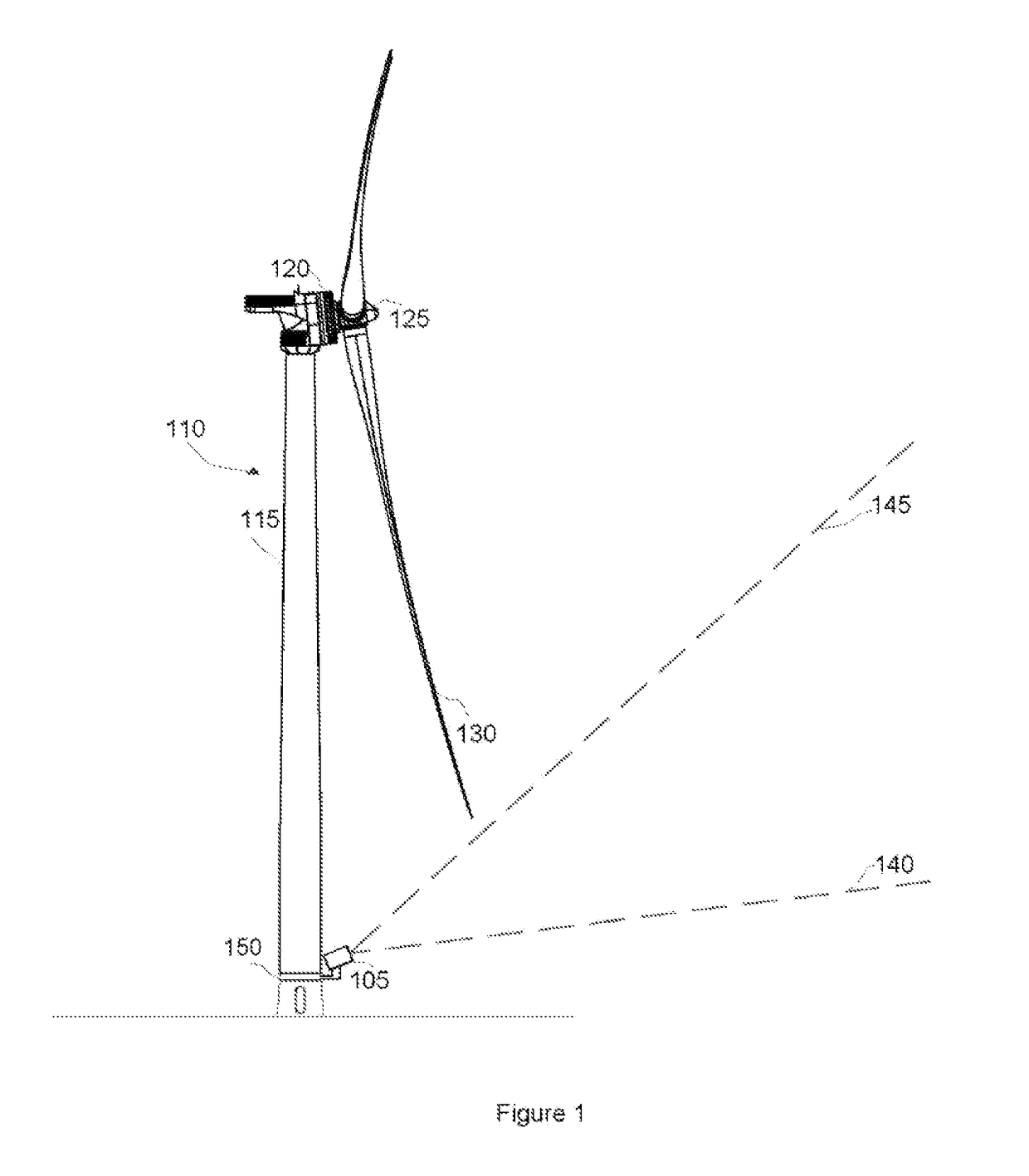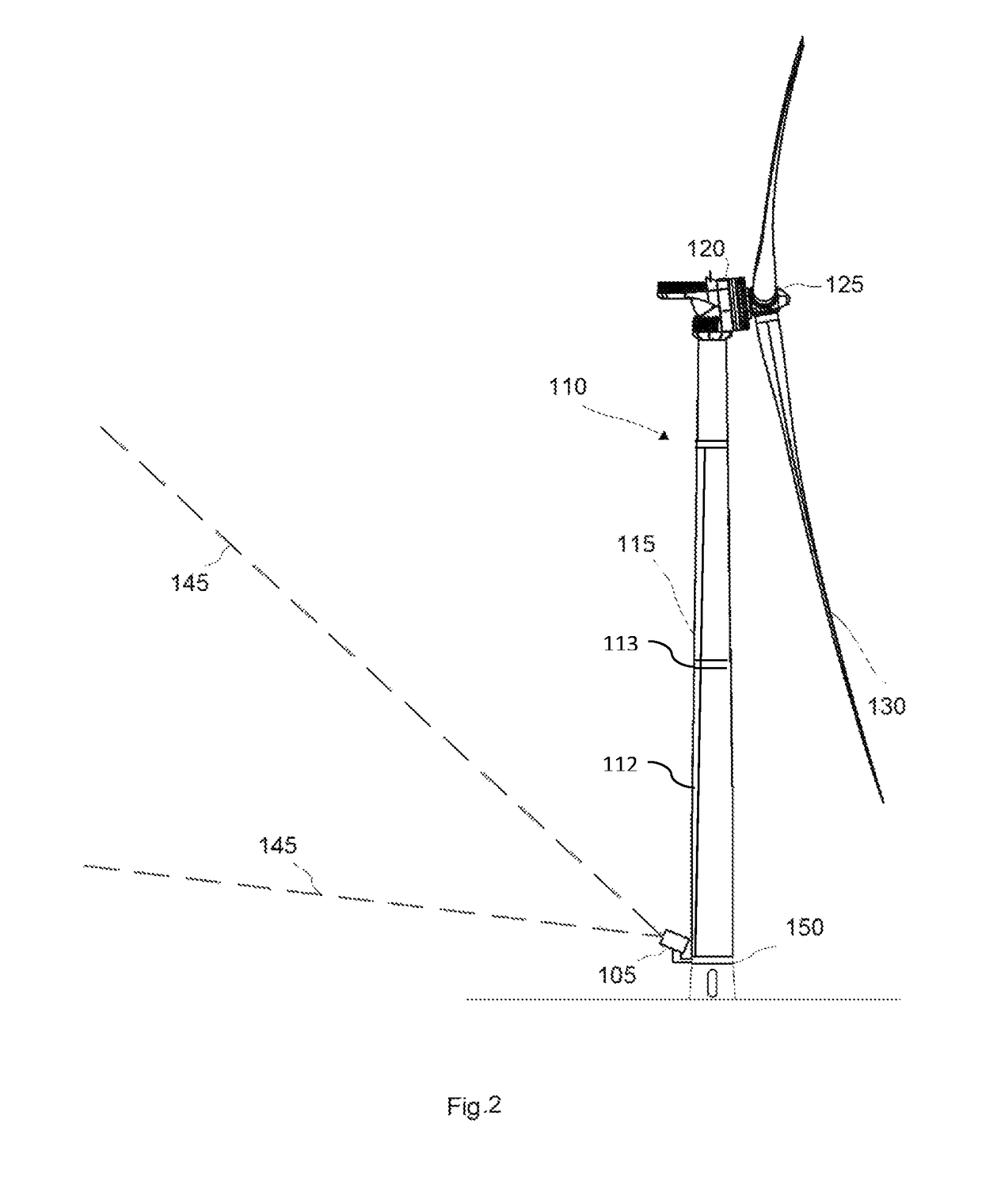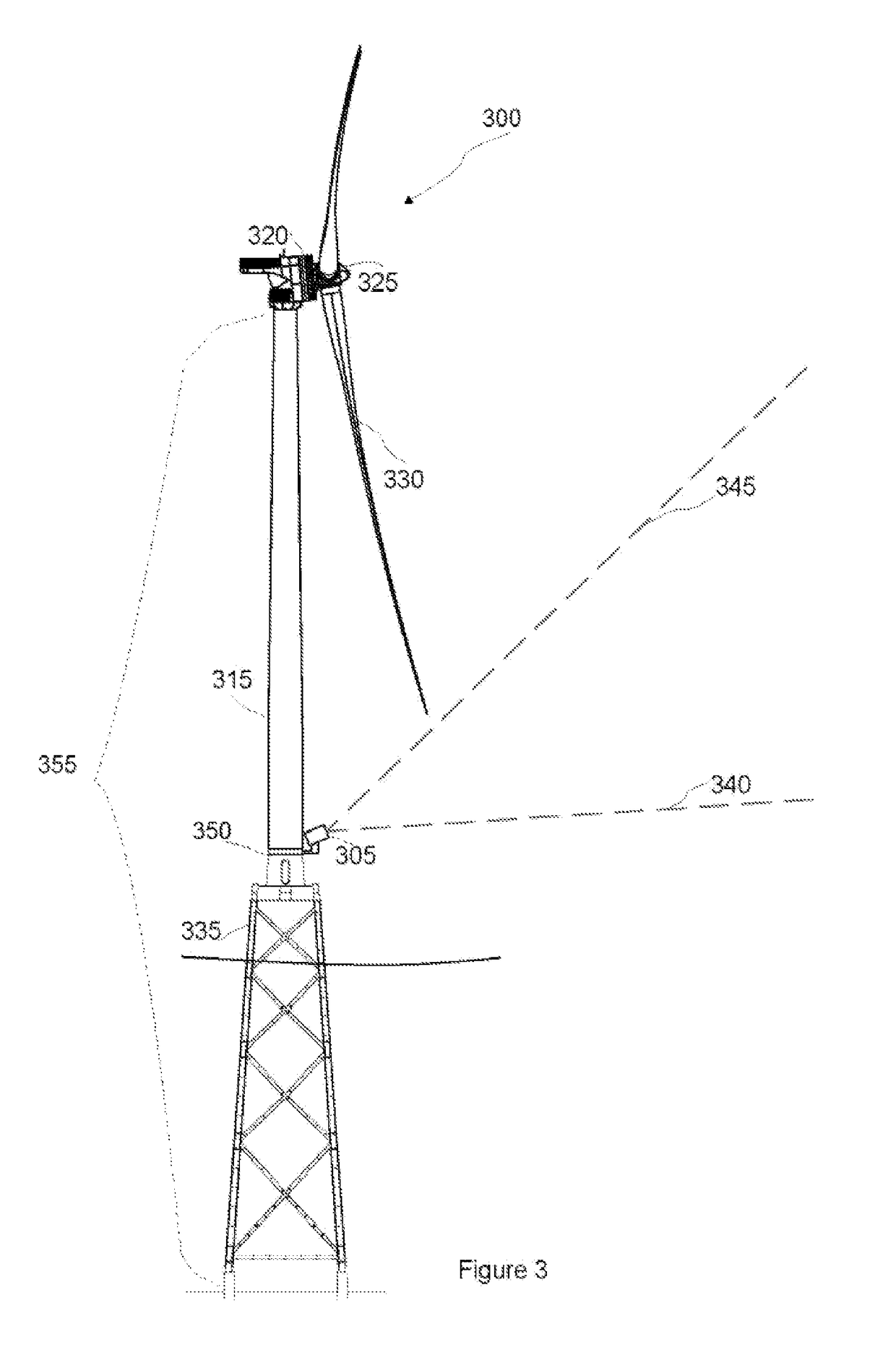Wind turbine with a wind sensing apparatus
a wind turbine and wind sensing technology, applied in the direction of wind turbines, engine control, wind energy generation, etc., can solve the problems of affecting the performance of wind turbines, affecting the success of measurements, and affecting the structural load of wind turbines and their components, so as to achieve easy installation and maintenance, and the effect of reducing the area and direction
- Summary
- Abstract
- Description
- Claims
- Application Information
AI Technical Summary
Benefits of technology
Problems solved by technology
Method used
Image
Examples
Embodiment Construction
[0034]FIG. 1 illustrates an embodiment of a wind turbine according to the present invention. The wind turbine 110 comprises a tower 115, a nacelle 120, a rotor 125 and rotor blades 130. The LIDAR 105 is moveably mounted around the circumference of the tower on a guiding rail 150 at the base of the tower and is forward-facing for measuring incoming wind speed and fluctuations. The vertical scanning range of the LIDAR is illustrated with a lower limit 140 which may be substantially horizontal and an upper limit 145 which may be limited by the lowest travel path of the rotor blades.
[0035]The wind sensing apparatus for measuring wind fluctuations and wind speed in the atmosphere may use the Doppler Effect. Such remote wind sensing apparatuses may comprise LIDARs and / or SODARs. These wind sensing apparatuses may be moveably mounted to the tower base with the aid of a platform with horizontal and / or vertical mechanisms for moveably mounting it to the support structure e.g. guiding rails. ...
PUM
 Login to View More
Login to View More Abstract
Description
Claims
Application Information
 Login to View More
Login to View More - R&D
- Intellectual Property
- Life Sciences
- Materials
- Tech Scout
- Unparalleled Data Quality
- Higher Quality Content
- 60% Fewer Hallucinations
Browse by: Latest US Patents, China's latest patents, Technical Efficacy Thesaurus, Application Domain, Technology Topic, Popular Technical Reports.
© 2025 PatSnap. All rights reserved.Legal|Privacy policy|Modern Slavery Act Transparency Statement|Sitemap|About US| Contact US: help@patsnap.com



